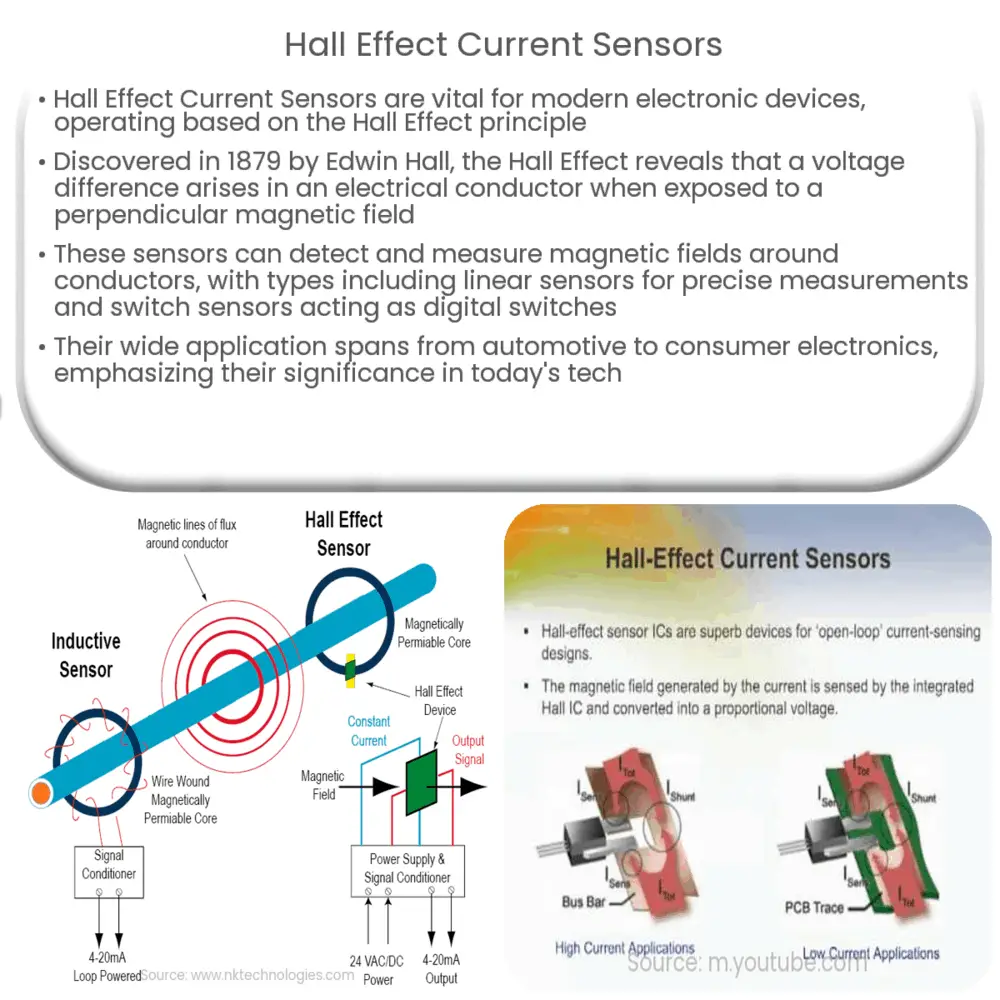Explore the workings, types, attributes, and applications of Hall Effect Current Sensors in our comprehensive guide.

Understanding Hall Effect Current Sensors
The cornerstone of modern electronic devices, Hall Effect Current Sensors, play a significant role in enhancing efficiency and optimizing performance. To gain a comprehensive understanding of this device, it’s essential to first explore its basic principle – the Hall Effect.
Hall Effect: The Fundamental Principle
The Hall Effect, discovered by Edwin Hall in 1879, demonstrates that a voltage difference is generated across an electrical conductor when it’s subjected to a magnetic field perpendicular to the direction of current flow. This voltage difference, known as the Hall voltage, is directly proportional to the magnetic field intensity and the current flowing through the conductor.
Working Mechanism of Hall Effect Current Sensors
With the Hall effect at its core, a Hall effect current sensor operates by detecting and measuring the magnetic field generated around a conductor due to the current flowing through it. These sensors typically contain a thin strip of conductive material (Hall plate) through which a constant current is passed. As the magnetic field interacts with this current, a Hall voltage is induced across the plate. This Hall voltage serves as an accurate representation of the current flowing through the conductor and is amplified for ease of measurement.
Types of Hall Effect Current Sensors
The use of Hall Effect Current Sensors spans across a broad spectrum of applications, from automotive electronics to power management systems. Their adoption stems from their unique properties, which provide numerous benefits over traditional current-sensing techniques. As we delve further into their attributes, functionalities, and applications, it becomes clearer why they’ve become such an integral part of modern technology.
Attributes of Hall Effect Current Sensors
Hall Effect Current Sensors offer some unique attributes that set them apart from other current sensing technologies. Firstly, these sensors have a wide bandwidth, capable of detecting DC and AC currents over a broad frequency range. Secondly, they boast high accuracy, largely unaffected by temperature variations. Moreover, as non-contact sensors, they ensure excellent electrical isolation between the input and output, reducing safety risks and eliminating potential ground loop issues.
Applications of Hall Effect Current Sensors
The Future of Hall Effect Current Sensors
The technology behind Hall Effect Current Sensors continues to evolve, paving the way for more precise, reliable, and energy-efficient devices. With the ongoing advancements in semiconductor fabrication techniques, it is expected that these sensors will become even more compact and cost-effective in the future. They are also anticipated to cater to a broader range of applications with increased power ratings and improved linearity.
Conclusion
In conclusion, Hall Effect Current Sensors form an indispensable part of modern electronic systems. By harnessing the principle of the Hall Effect, these sensors offer an accurate, non-contact method for current measurement. Their wide range of applications, from automotive to consumer electronics, attests to their versatility and utility. As technology continues to advance, we can expect the role of Hall Effect Current Sensors to further expand, enhancing the performance and safety of electrical and electronic systems across various sectors.
